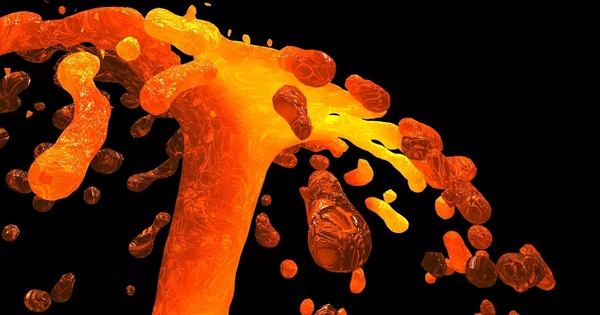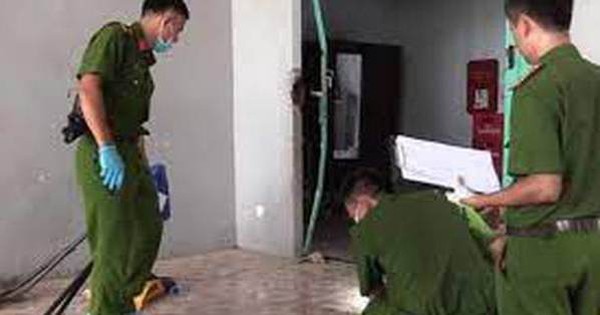From those pairs of nerve roots arise smaller branches that spread throughout the body and control the functioning of all organs.
Depending on the task assigned by nature, each cranial nerve fiber when damaged will cause specific diseases.
Name by function
For convenience “control” scientists numbered according to Roman numerals for 12 pairs of cranial nerves. Starting with number I, ending with number XII. In particular, when the VII nerve is damaged, it causes hemiplegia, called VII facial paralysis for short, which is familiar to many people.
Although experts are often “counted” by number, each pair of nerves has a unique name called according to the function, characteristics or location of that nerve.
They include: olfactory cord (string I), optic nerve (cord number II), common oculomotor nerve (cord III), sensory cord (cord IV), trigeminal cord (cord V), cord external optic nerve (VII), facial cord (VII), auditory (VIII), glottis (IX), vagus (X), spinal cord (XI) ), hypoglossal cord (XIII wire).
Related diseases

Manifestations of nerve pain V.
Nerve I (olfactory nerve): From the brain, the olfactory cord crawls through the medulla oblongata to the base of the brain, and then passes through the foramen septum into many small fibers covering the nasal mucosa. It is responsible for receiving the sense of smell.
If the smell is lost, this cord is injured, broken or compressed by a tumor. If the smell disorder is caused by rhinitis, polyps. Some infections cause sudden loss of smell, typically infection with the SARS-CoV-2 virus that causes Covid-19.
Nerve II (optical nerve): From the visual center in the cerebral cortex, the optic nerve exits the skull through two small bony holes called the visual foramen. Upon reaching the retina, the optic nerve ends thinly dispersed into cells.
These cells perform the task of receiving images of things and transmitting the sensation of light. If the tumor is compressed, only one eye can be seen.
This condition is called selling. In the case of pathology that causes the optic nerve to shrink, the patient will see everything in this world like a normal person squinting through a bamboo tube!
Third nerve (common oculomotor): From the midbrain (also called the brain stem) toward the front, then into the orbit. This nerve is responsible for moving some muscles in the eye to bring the eyeball up and down and inward.
If damaged, it will cause external strabismus (in contrast to strabismus while damaging the sixth nerve). Common causes of third nerve damage are skull base trauma, cavernous sinus thrombosis, meningitis, and brain stem bleeding.
IV nerve (Touching nerve): Has the same starting position as the common oculomotor nerve, also runs into the eye socket, controls the activity of the large oblique muscle so that the eye can turn downward and outward.
When the 4th nerve is damaged, it will not be able to bring the eyes out and down. Common causes of this nerve damage are the same as those of III nerve damage. Presumably, they share the same origin and starting direction.
Vth nerve (trigeminal nerve): Also known as the trigeminal nerve because it divides into 3 branches: eye, upper jaw and lower jaw. This is the largest of the 12 pairs of cranial nerves. It comes from the pons, facing forward.
The ocular and maxillary branches receive sensation from the eye area, upper eyelid skin, nasal cavity, forehead, scalp, upper pharynx, and glands. The mandibular branch receives sensation for the anterior 2/3 of the tongue, and the salivary glands and mandibular teeth control the activities of the biting and chewing muscles.
This cord injury results in loss of sensation in the branched cord sections. The patient has a headache, poor lower jaw movement, and does not bite tightly. Common causes are skull base trauma, polyneuritis, and shingles. In which shingles is the most “familiar face”.
Nerve VI (External oculomotor nerve): Originating from the brain stem, passing through the medullary sulcus and pons anteriorly and branching into the orbit, the external rectus muscle. It controls eyeball movements in the outward glance position. If the sixth nerve is damaged, it will cause the eye to have an internal strabismus (in contrast to the external strabismus when the third nerve is damaged).
VII nerve (facial nerve): This is a mixed nerve of sensory, motor, and autonomic nerve fibers. Originating from the brainstem and passing through the medullary sulcus and pons, after passing a distance through the temporal bone, it exits the skull through the foramen mastoid.
The main job of the VII nerve is to move the muscles of the face. If the facial injury will deviate to the healthy side, the nucleus pulposus will be pulled to the non-paralytic side. Therefore speaking is difficult and eating is scattered. Symptoms will be more pronounced when asking the patient to laugh or whistle. The most common causes are cerebrovascular accident and brain tumor.
In the specialty, damage to the VII nerve is divided into two types, commonly called central facial paralysis (due to damage to the supranuclear motor neurons) and peripheral facial paralysis (due to damage from the nucleus outward).
People with peripheral facial paralysis also have the expression of eyes not closing on the paralyzed side. The causes of peripheral facial paralysis are cold infection, shingles, polyneuritis, meningitis, middle ear diseases and stony bones.
VIII nerve (auditory nerve): Originating from the cerebral cortex, exiting the skull into two groups of fibrous nerves. The group in the cochlea receive auditory information (hearing), the group in the vestibule is responsible for maintaining balance and posture for the body.
The causes of this nerve damage can be high blood pressure, atherosclerosis of the arteries in the cochlea – vestibular, meningitis, traumatic brain injury, brain tumor, poisoning (chemicals or drugs). disease) and chronic nephritis.
Nerve IX (glottis): Originating from the lateral medullary sulcus running into the pharyngeal cavity. The glottis is responsible for movement of the pharyngeal muscles and feels the posterior third of the tongue. The strange thing is that this cord is often paralyzed along with other wires, not… being paralyzed on its own!
Nerve X (Vagus): After passing through the skull from the brain, this nerve branches down to the neck, chest, and abdomen. At the abdomen, it splits into 2 branches and goes back up to control vocal cord activity.
Nerve X is classified as the autonomic (vegetative) nervous system. It is the body’s largest parasympathetic nerve. Responsible for movement and sensation of most organs in the chest and abdomen such as the heart, lungs, stomach, intestines, liver, kidneys, bladder…
Nerve X damage often causes “choking solid foods, choking on liquids”. If damage occurs in the recurrent branch, hoarseness is caused by a “malfunction” of the vocal cords. Causes of damage from mediastinal tumor compression or risks from neck and thoracic surgery.
XI nerve (spinal cord): Originating from the posterior sulcus of the medulla oblongata, passing through the skull, descending to the thoracic region and branching off to control the action of the larynx, sternocleidomastoid, and trapezius muscles. Spinal cord injuries affect the voice and the functioning of the muscles involved.
When the medulla oblongata (also called the medulla oblongata – the junction between the brain and spinal cord and the bulbous bulb) is damaged, it will cause paralysis of the XI nerve. It also causes paralysis of nerve pairs IX (glottis) and X (vagus).
XII nerve (hypoglossal): Originating from the anterior sulcus of the medulla oblongata, passing through the base of the skull and branching into the pharynx and jaw region. The main job of the hypoglossal nerve (also called the sublingual nerve) is to move the muscles of the tongue.
Paralyzed of this nerve, the tongue could not stick out straight, but was pushed to the healthy side. The cause of damage to the hypoglossal nerve is usually meningitis and trauma that causes the skull base to break.
at Blogtuan.info – Source: Soha.vn – Read the original article here



